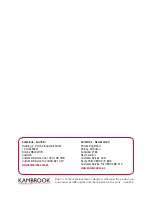
Chapter 5: Operating Modes and Configuration
As shipped, the unit will accept management packets with any VLAN tags and attempt to respond to the
same. For more robust performance, specific VLAN tag settings can be configured. These settings only
apply to packets to and from the converter's management entity. VLAN tags in packets destined for the
DS3/E3 link are passed unaltered.
VoIP / Video or High-CoS Priority Frames
Receive queue space is reserved in the converter to allow frames with high 802.1p class-of-service (CoS)
priority settings to bypass existing frames waiting to be transmitted to the DS3/E3. This allows voice, video
and other high-priority traffic to experience low-latency transmission. Firmware shipped since July 2008
allows the “high” CoS level to be configured. Most VoIP traffic is tagged at CoS 5 or 6, so level 5 is
typically a good setting for the high-CoS value. Prior firmware has the fixed, high-CoS level set at >=6.
On such units, CoS can often be set/confirmed at 6 on the source VoIP equipment.
Port Auto-Disable and Return-to-Service Delay
In addition to manually configuring a port as disabled, the converter has the ability to delay a DS3/E3 port's
return to service for a specified period of time after it has failed or disable a LAN port if both telecom links
are down.
DS3/E3 Return to Service delay
The return-to-service delay prevents network topology thrashing if a telecom link is flapping up and down.
If the telecom link is the only path to the remote network, the return-to-service delay should probably be set
to 0. During the time that a telecom port is in a return-to-service delay, management packets will continue
to flow across the telecom link in order to allow management of the remote converter.
Some telecom carriers will interrupt service for 50msec, once per day as a link test. Firmware shipping
since August, 2010 has a configurable, failure-time setting to prevent such tests from triggering a link-
down, retun-to-service delay.
To exit the return-to-service delay, power-cycle the converter or click the button which appears on the
configuration HTTP screen of a converter that is in configuration delay.
LAN Auto-Disable
The LAN port can be configured to automatically disable itself when no telecom link exists. This setting is
useful for attached LAN equipment which requires the LAN port to go down in order to understand that the
path to the remote network is no longer available. Use this setting cautiously, as management of the
converter will also no longer be possible through a disabled LAN port.
To exit the LAN-port-disabled condition, power-cycle the converter, which will allow communication with
the converter for approximately one minute even if telecom ports are down.
Chapter 6: Interoperability
LAN
The LAN ports of the converter support, at a minimum, all 100BaseTX Full-Duplex Ethernet connections
up to maximum line lengths and are set to auto-MDI/MDIX to automatically detect/correct crossover vs
straight LAN cable and autonegotiate for full-duplex and pause frame modes with the attached LAN
equipment. Passwords may be purchased to upgrade to enhanced LAN port modes as described elsewhere
in this manual.
The converter will pass all unerrored packets which do not exceed 1650 bytes in packet length (9600 with
jumbo frames enabled). This length allows QinQ, stacked VLAN, and extended packet-length router
protocols to be passed without concern. The management agent accepts and responds with packets having
MTU of 1350 bytes in order to automatically allow room for security protocol overheads.
16















































